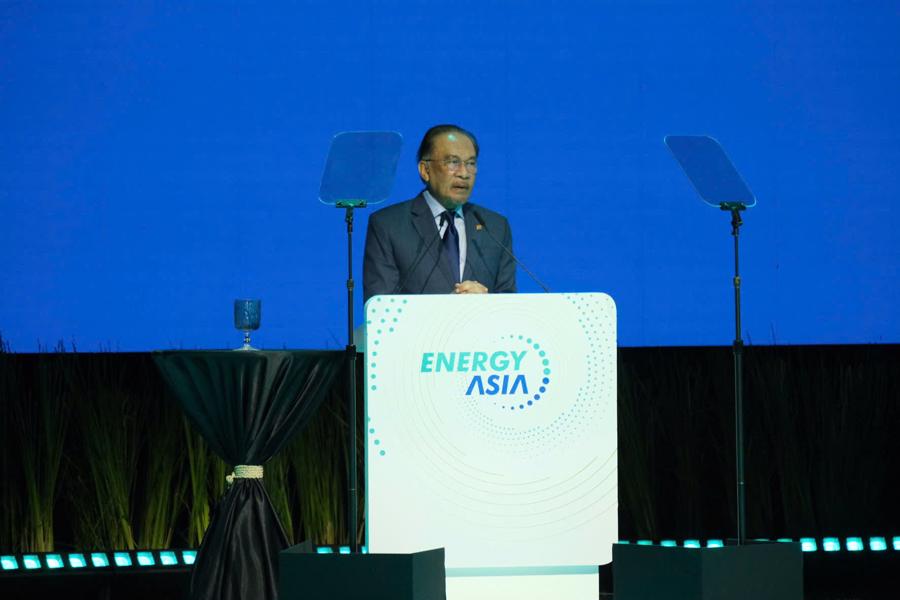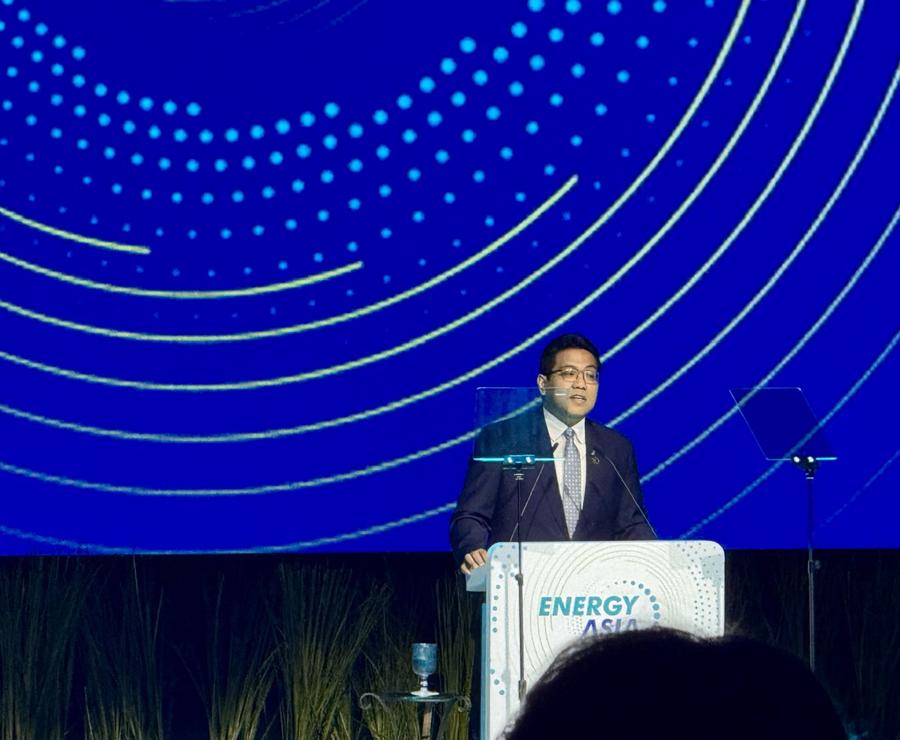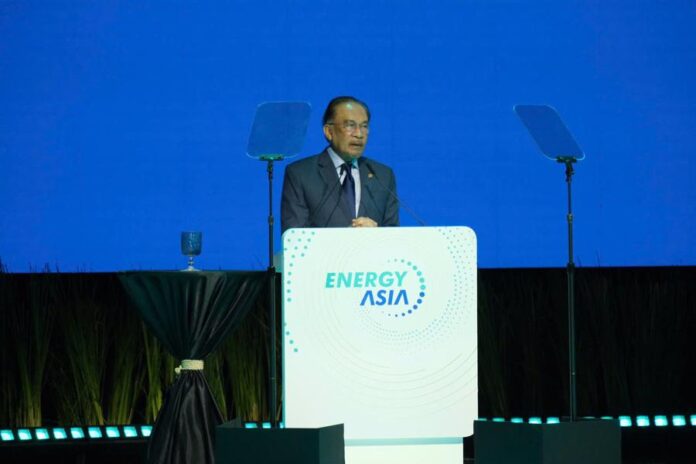On June 16, 2025, the Energy Asia Conference, themed “Advancing Asia’s Energy Transition,” officially commenced in Kuala Lumpur, Malaysia. The conference was organized by Petroliam Nasional Berhad (Petronas) in collaboration with CERAWeek (an S&P Global subsidiary)
In his opening remarks, the Malaysian Prime Minister, Dato’ Seri Anwar bin Ibrahim, highlighted that the Asia-Pacific region accounted for 50% of global energy consumption in 2024 and continues to rise. Additionally, the region is responsible for 60% of global greenhouse gas emissions.
ENERGY – A CRITICAL YET IMBALANCED SECTOR
In Southeast Asia, eight out of ten countries have set net-zero emission targets. At COP28, ASEAN member states reaffirmed their commitment by pledging to triple global renewable energy capacity to 11,000 GW by 2030.
“We are faced with a central challenge: How do we realize a just and equitable energy transition for Asia, which will almost certainly require significant increased investment across various energy project types?” emphasized the Malaysian Prime Minister.
At the conference, YM Tan Sri Tengku Muhammad Taufik, Chairman and CEO of Petronas, noted that energy-driven revolutions have contributed to global GDP growth, surpassing the $100 trillion mark in 2022 and sustaining it since.
Notably, the world is on the cusp of the Fourth Industrial Revolution, with artificial intelligence (AI) rapidly becoming an indispensable foundational technology across sectors.
By 2030, data center electricity consumption is projected to reach 945 TWh, more than double the 415 TWh in 2024, accounting for over 20% of total electricity demand growth.
“The entire energy system is adjusting to cater to this wave of demand. Meanwhile, the world is still adjusting to the trend of aligning ESG policies, threatening to derail net-zero emission targets from the Paris Agreement,” remarked YM Tan Sri Tengku Muhammad Taufik.

The Asia-Pacific region is currently the most populous in the world, with 4.8 billion people (60% of the global population), home to three of the five largest economies, and a dynamic consumer market with growing demands.
Additionally, Asia is a global manufacturing hub, supplying semiconductors, electronic components, automobiles, pharmaceuticals, and more worldwide, thanks to its bustling ports, talented workforce, and conducive policies.
According to the Chairman of Petronas, the region aims to shape the Fourth Industrial Revolution, with a workforce that is increasingly digitalized and AI-savvy.
However, amidst these positive growth prospects, there are significant inequalities. As per the IMF, GDP per capita in the region ranges from $1,200 to $93,000; more than 350 million people have limited access to electricity, and 150 million people have no access at all.
“While investment in renewable energy is increasing, fossil fuels still account for over 80% of the region’s energy mix. Therefore, energy access needs to be correlated with cost and security factors if we are to advance in the energy transition,” informed YM Tan Sri Tengku Muhammad Taufik.
THE FUTURE AND BEYOND: FORGING A RESILIENT ENERGY ASIA
According to Amin Nasser, President and CEO of Saudi Aramco, the energy transition is incredibly costly, and achieving net-zero emission targets could amount to $200 trillion. Additionally, while renewable energy is essential and growing, it is still far from shouldering the entire burden as expected, and risks remain.
“As the growth engine of the global economy and the world’s largest energy consumer, Asia accounts for nearly half of global energy demand. Without considering Asia’s needs and resources, the transition will lack weight, momentum, and the chance of success,” opined Amin Nasser.
Meanwhile, YM Tan Sri Tengku Muhammad Taufik stated that to meet growth and net-zero emission targets, Asia needs to invest $88.7 trillion in energy from now until 2050, including traditional and renewable energy sources.
Asia boasts significant potential in solar and wind energy, with its long coastlines and favorable geological formations for carbon storage. Combined with clean natural gas, this presents an ideal growth trajectory. The Asian energy sector must accelerate innovation, digitalization, and technology adoption to meet diverse demands more efficiently and cleanly.

“We are faced with market volatilities, rising costs, frequent natural disasters, and increasing global temperatures, which call for urgent action and flexible adaptability,” emphasized YM Tan Sri Tengku Muhammad Taufik. “Asia will play a pivotal role in this global endeavor. To succeed in the energy transition, Asia must build on its achievements and accelerate from its current position of high growth demand and expanding opportunities.”
In his message at the conference’s opening, the Chairman and CEO of Petronas outlined three pillars of action for a sustainable energy future for Asia.
First, diversify the energy mix; build a balanced portfolio of low-emission and emission-reducing energy sources to enhance resilience.
Second, expand energy investment to ensure stable supply and reasonable prices. Governments, financial institutions, and businesses must collaborate to unlock capital, especially in developing economies where the need is most urgent.
Third, strengthen regional collaboration because only through global solidarity can a shared energy future be realized.
Energy Asia, held from June 16-18, 2025, in Kuala Lumpur, Malaysia, attracted nearly 3,000 delegates from over 60 countries, encompassing not just the oil and gas industry but also the power, utilities, technology, logistics, renewable energy, clean technology, finance, and consulting sectors.
One of the conference’s key highlights was the inaugural Energy Asia Global Leadership Forum, bringing together over 30 global CEOs and senior leaders from the oil and gas, renewable energy, power, utilities, technology, and finance sectors.
The Prime Minister Outlines Six Significant Impacts of the Fourth Industrial Revolution Center in Ho Chi Minh City
On the morning of September 25, Prime Minister Pham Minh Chinh attended the inauguration of the Center for the Fourth Industrial Revolution (C4IR) in Ho Chi Minh City, as part of his participation in the 5th Ho Chi Minh City Economic Forum. The Prime Minister also held a working session with the Center’s founding members, emphasizing the importance of this initiative in driving Vietnam’s digital transformation and economic growth.
The Future of Work: Navigating the Labor Market in the Fourth Industrial Revolution
The Fourth Industrial Revolution has ushered in a plethora of new industries and, with it, a surge in demand for highly skilled workers to facilitate this transition. Today’s society no longer solely values academic qualifications but places a premium on vocational skills and competencies that meet the needs of these emerging industries.
“Synergizing Academia and Industry for Effective Workforce Training”
The link between academia and industry is vital to enhancing the quality of education and meeting the demands of a rapidly changing labor market. This partnership ensures that educational institutions can equip graduates with the skills and knowledge that match the evolving needs of businesses, thereby fostering a dynamic and resilient workforce.







































